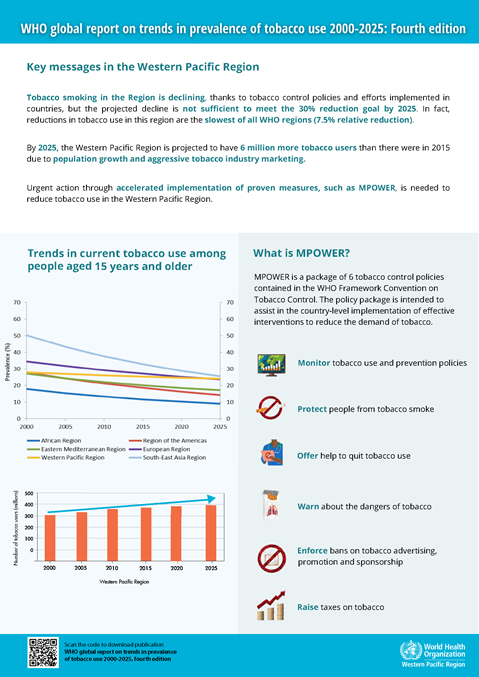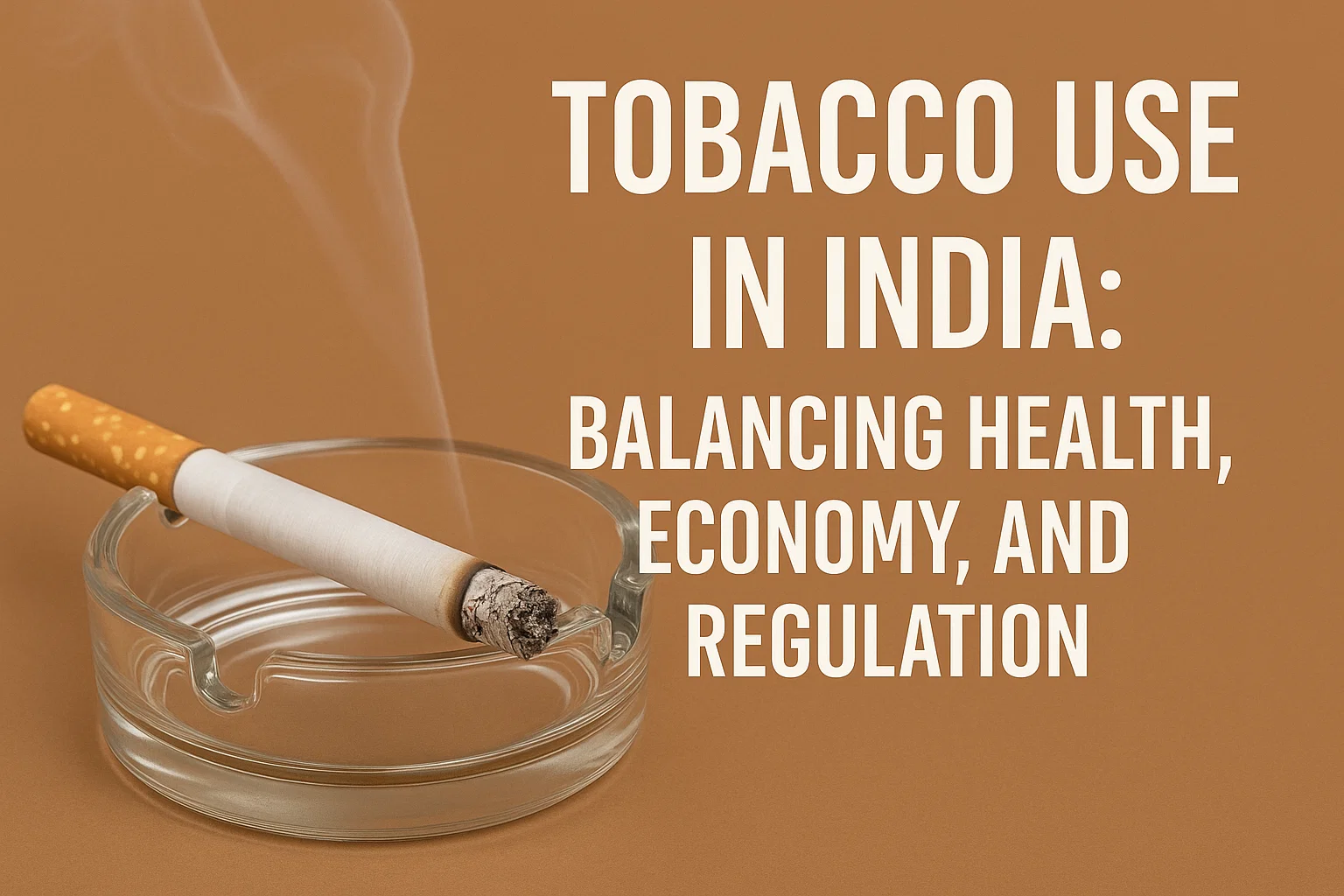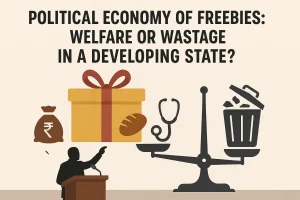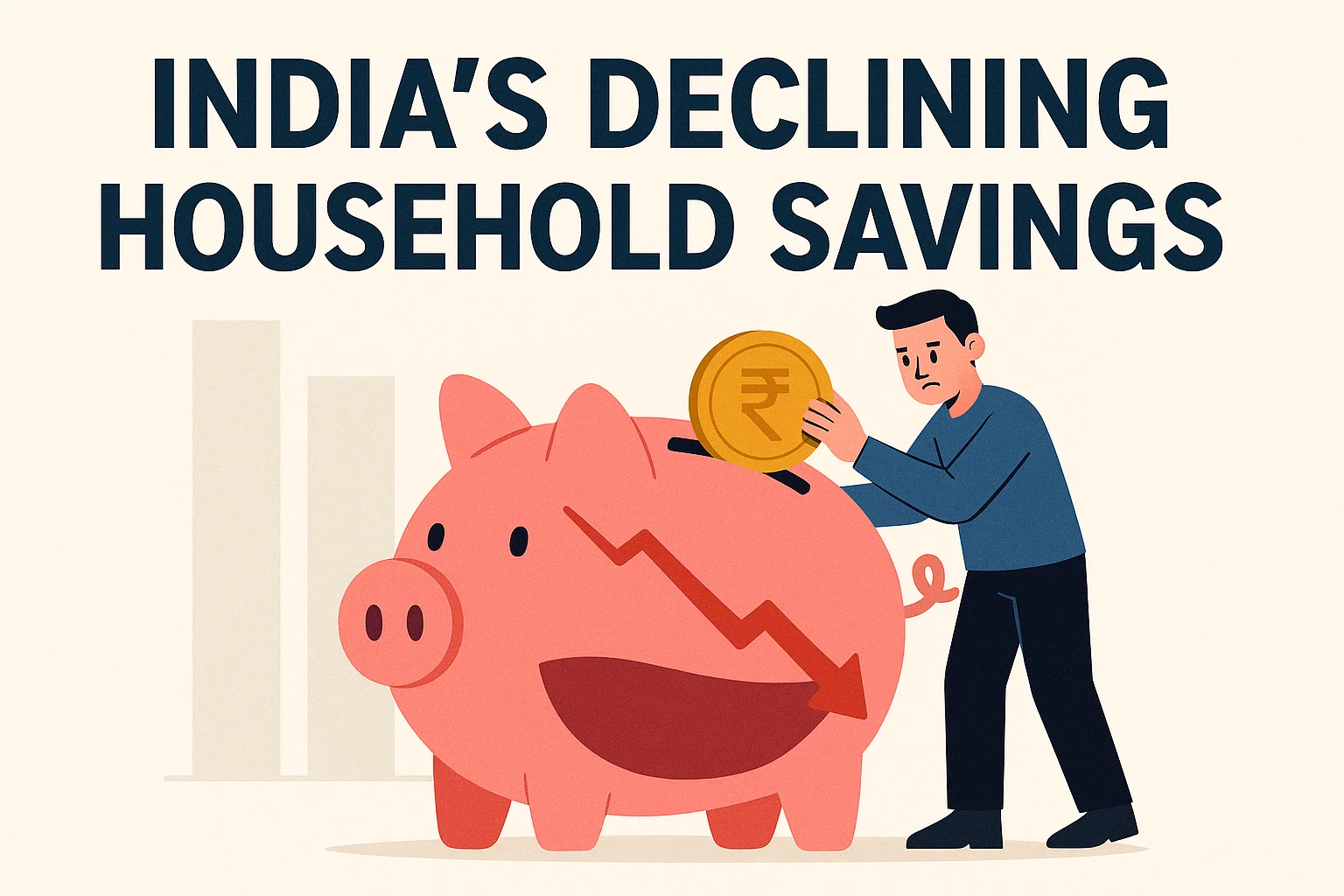Tobacco Use in India: Balancing Health, Economy, and Regulation
Explore India’s tobacco landscape — from rising health risks and economic costs to the country’s role as a leading tobacco producer. Learn how India balances tobacco regulation, farmer livelihoods, and public health through laws like COTPA and programmes like NTCP.
Context
Globally, tobacco use has seen a remarkable decline over the last two decades. The World Health Organisation (WHO) Tobacco Trends Report 2025 reveals that global tobacco prevalence among adults has fallen from 33% in 2000 to less than 20% in 2025. This decline is the result of robust tobacco control laws, public awareness, and consistent advocacy from civil society. However, India’s case remains complex, reflecting the challenge of balancing public health imperatives with economic and livelihood concerns.

Tobacco Prevalence in India
According to the latest National Family Health Survey (NFHS) data, tobacco use remains widespread in India. Nearly two out of every five men and one out of every ten women aged 15 and above consume tobacco in some form.
The pattern of use displays strong demographic and regional variation:
-
Gender and Geography: Tobacco use is significantly higher among men and is far more prevalent in rural areas compared to urban centres. Even among youth, smokeless alternatives and traditional forms of tobacco remain popular.
-
Forms of Use: India’s challenge is distinctive due to the high prevalence of smokeless tobacco (SLT), which is the most common form among women. Traditional products such as bidis also account for a substantial portion of consumption.
-
Regional Differences: The Northeast and Central India record the highest prevalence rates, whereas the Southern states report comparatively lower usage.
This pattern indicates that while progress has been made in urban areas, rural regions continue to face structural and behavioural barriers to quitting tobacco.
Health Implications
Tobacco use is one of India’s leading causes of preventable deaths, accounting for over 1.3 million deaths every year. Its health burden extends across multiple domains:
-
Cancers: Tobacco is directly linked to oral, lung, and oesophageal cancers.
-
Cardiovascular Diseases: Smoking and smokeless tobacco contribute to heart attacks and strokes.
-
Respiratory Illnesses: Chronic bronchitis, COPD, and tuberculosis complications are aggravated by tobacco use.
-
Maternal and Child Health: Tobacco exposure increases risks of stillbirth, low birth weight, and pregnancy complications.
The economic cost of tobacco consumption is equally alarming — estimated at nearly ₹2 lakh crore annually, equivalent to 1% of India’s GDP. This figure includes healthcare costs and productivity losses, highlighting tobacco as both a public health emergency and a drain on the economy.
Balancing Production and Consumption
India faces the dual challenge of being a major tobacco producer and a nation grappling with high consumption.
Production Side
India is the second-largest producer and exporter of tobacco globally. The Tobacco Board of India, established in the 1970s, regulates cultivation, particularly of Flue-Cured Virginia (FCV) tobacco. The Board ensures fair pricing through auction systems, supports farmers in crop planning, and promotes exports.
Nearly 45 million people depend on tobacco farming, processing, and trade for their livelihoods. Tobacco exports earn around ₹12,000 crore annually, contributing significantly to foreign exchange and rural income stability.
Consumption Side
On the regulatory and public health front, India has implemented a comprehensive policy framework:
-
COTPA, 2003: Prohibits smoking in public places, bans sales to minors and near educational institutions, and mandates 85% pictorial warnings on packaging.
-
WHO FCTC (ratified 2004): India committed to international standards on taxation, advertising bans, cessation support, and illicit trade control.
-
National Tobacco Control Programme (NTCP): Runs public awareness drives, national quitlines, and strengthens enforcement through state health departments.
-
Product Restrictions: Several states have banned gutkha and other smokeless tobacco products, while e-cigarettes were prohibited in 2019.
These measures aim to strike a delicate balance between protecting public health and ensuring the economic stability of those dependent on tobacco cultivation.
Conclusion
India’s tobacco challenge lies at the intersection of public health, livelihood protection, and fiscal policy. While control efforts have been commendable, sustained progress will depend on behavioural change, farmer diversification, and stronger enforcement of existing regulations. Effective tobacco control, therefore, requires not just prohibition but also transition pathways for communities economically tied to this crop.
Subscribe to our Youtube Channel for more Valuable Content – TheStudyias
Download the App to Subscribe to our Courses – Thestudyias
The Source’s Authority and Ownership of the Article is Claimed By THE STUDY IAS BY MANIKANT SINGH





